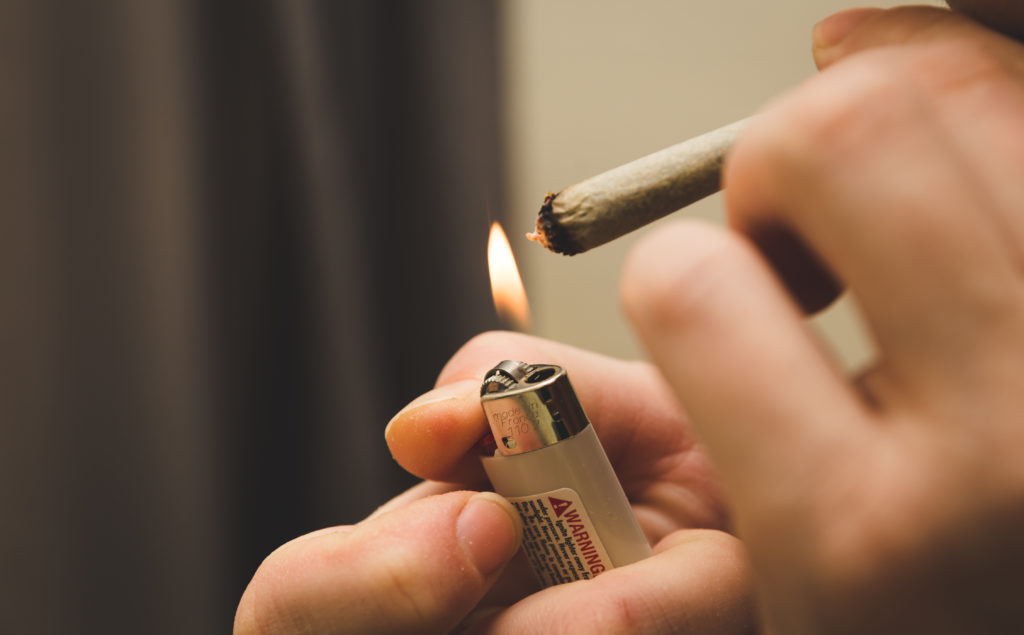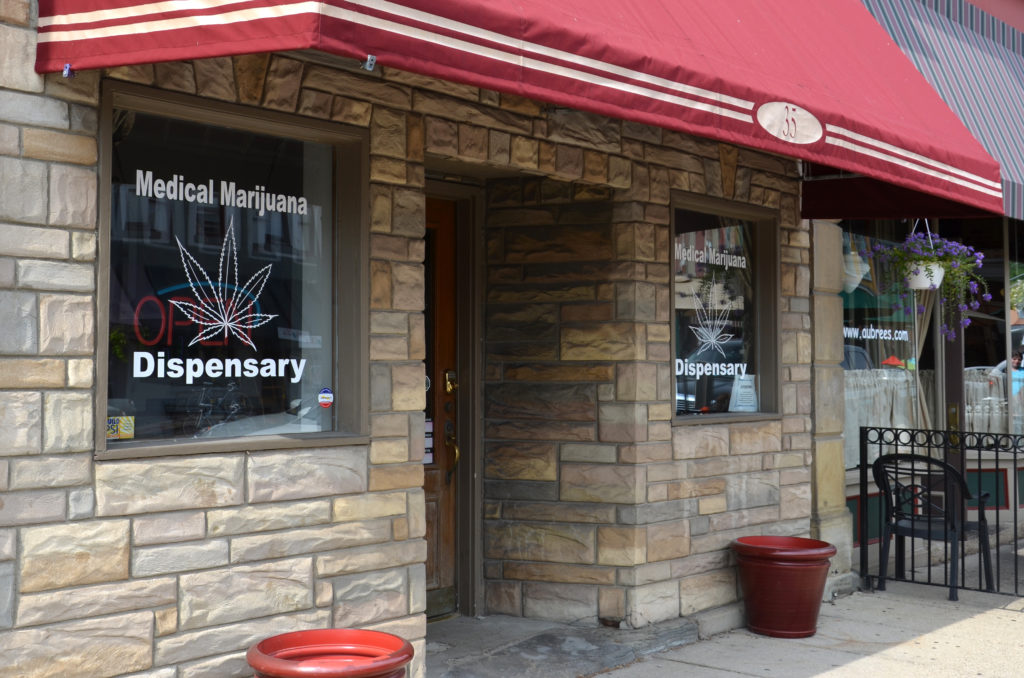Projections for the immediate future of California’s cannabis industry are somewhat grim, following a few years already full of ups and downs since cannabis was legalized via Proposition 64 in 2016.
Ever since the state began to officially provide licensing to legal canna-businesses in 2018 (2 years after Prop 62 passed), the industry has been beset by numerous struggles including cannabis bans and moratoriums in many California cities, high taxes and fees, strict and constantly changing regulations, no access to banking, and relentless competition from the much larger illicit market – just to name a few.
And when it was finally looking like things would level out as far as sales, pricing, and navigating through the new legal system, the industry was sucker-punched yet again when a global pandemic threatened the little bit of stability that has been so hard to come by.
Use the sign-up form below to subscribe to the CBD Flowers Weekly Newsletter
Dispensaries Remain Open
Although most of the state was forced to shut down and “stay at home” in an effort to minimize the spread of COVID-19, cannabis businesses were deemed essential to public health and permitted to remain open, granted they were willing to adhere to some new guidelines. Many industry leaders commended these actions, including Eric Altieri, executive director of NORML.
“There are several million state-licensed medical cannabis patients in America,” he mentioned. Since many of these patients are among the most-vulnerable populations, it is essential threat they maintain un-interrupted, regulated access to lab-tested products during this time.” Additionally, the long-term position at NORML has been the need for state laws to recognize and permit patients to engage in personal cultivation…. consistent known supply of their medicine, and that their access remains affordable.”
Expectedly, there was an immediate surge in cannabis sales as consumers stocked up, in fear that shops would eventually have to close close or there where be a future shortage. “We initially saw a spike in sales that was attributed to panic buying,” said Josh Drayton, a spokesman for the California Cannabis Industry Association. He also mentioned that now those numbers have “leveled out.”
Not Recession Proof
According to a note in California Governor Gavin Newsom’s revised, projected budget, “While similar products like alcohol and tobacco tend to be recession-resistant, the forecast assumes that cannabis businesses will be more negatively impacted by the COVID-19 pandemic. Cannabis businesses have less access to banking services that could provide liquidity, have a younger consumer base likely to be disproportionately affected by the COVID-19 recession, and still must contend with competition from the black market.”
In an effort to lend a helping hand, the Newsom administration is allowing some leeway on some of the restrictions that would further hinder the industry at a time like this. Additionally, license and renewal fees have been deferred (although when they’re finally due it could be very costly), and the deadline for filing first quarter tax returns has been extended.

Other rules that have been temporarily waived include the requirement of customers to sign for a prepaid delivery, allowing retailers to accept expired drivers licenses (since the DMV is currently closed), and allowing the sale of non-cannabis products that are instead virus related, such as hand sanitizer, that could not be sold in a dispensary prior to this.
Drop in Tourism
Another thing that’s having a major impact on the industry is a lack of tourism. California is state that receives millions of visitors every year, many of whom shop at local cannabis dispensaries while they’re in town. Here in my area, the cancellation of Stagecoach and Coachella, weekend-long music festivals with a combined total 170,000 attendees per day, has been a huge blow to the dispensary scene. These festivals, and many others that have been cancelled or postponed, draw in large crowds of young people with cash to spend, the prime demographic of a pot shop consumer.
“In places like San Francisco, San Diego and Los Angeles, 30% of our business is tourism,” said Jerred Kiloh, owner of the Higher Path cannabis store in Sherman Oaks, and president of the United Cannabis Business Association, a company that represents many Los Angeles-based retailers. “When you see a 30% reduction in tourism, that’s big. The impact of declining sales would be devastating for an industry that already faces unique challenges.”
Not to mention the fact that cannabis tourism is an industry in and of itself, one that brings in millions of dollars and travelers to a state. According to a recent study/survey, travelers who partake in cannabis-related activities spend more time on vacation than those who don’t – 5.1 nights instead of 4.6 nights.
“With the longer trips, trip expenditures are higher, although the average per person/per day expenditures are lower,” says Abby Leeper, communications manager for CTO. “Those who are motivated solely by participating in marijuana-related activities, on the other hand, reported shorter trips but higher expenditures.”
Black and Grey Market Challenges
According to M. Caesar, owner of Double R Kush Delivery Service in San Bernardino, CA, there is another issue that’s barely being addressed – a looming shortage of flower altogether. “Right now, it’s hard to find good stuff at decent prices, sometimes it’s hard to find anything at all,” he mentioned, also adding that he’s had to restock on flower from growers up to 5 hours away, as the local market is heavily strained.
As someone who likes to shop around at different dispensaries, I have noticed some supply issues as well. For example, here where I live (Low and High Desert), almost every dispensary is buying from the same farms. When shopping a few weeks ago, I found the same prepackaged ounce of Dream Walker OG, grown by Zips, at four different dispensaries, four different price points. Obviously, I ordered it from the place that had the best deal.
Cut forward to last week and I was unable to find any decent quality product at a price that wouldn’t break the bank. In this scenario, people will either have to wait to find something in their price range, travel somewhere that has more inventory, or buy it from a friend or acquaintance who’s selling on the side; the latter usually ends up being the most affordable and convenient option.
“It’s a pretty dire situation at this point,” said Jerred Kiloh, owner of the Higher Path cannabis store in Sherman Oaks, and president of the United Cannabis Business Association, which represents many California-based retailers. “The illicit market is just going to have another leg up this year, when people have less disposable income they are going to look at the lowest cost option.”
And let’s face it, when it comes to cannabis, there is no loyalty in your consumer base. Why would anyone stay committed to a particular dispensary when they can buy the same exact product somewhere else for cheaper? Many people who use cannabis, do so regularly and are looking for the best prices to work into their weekly or monthly budgets.
More Banking Problems
Yes, this again. It’s repetitive but relevant because when an entire industry doesn’t have access to conventional banking and lending services, you can bet that problems will arise. Most cannabis businesses are small, privately owned “mom-and-pop” shops. However, they are domestic businesses that don’t outsource any of their production to other countries, they employ upwards of 250,000 people in the U.S., and they pay layers upon layers of taxes to many different government agencies, all of which have turned their back on the industry and are refusing to offer them help in times of turmoil.

Cannabis businesses are dealing with the same hardships as other small business, but they do so with even less financial assistance than those who work in other industries. Aside from the regular, day-to-day issues that are present when a business can’t get proper funding, there are new and unique challenges that come along with being in the midst of a global pandemic.
For instance, if cannabis businesses can’t find eligible lenders, they won’t be able to access government relief programs like the $50 million IBank’s Disaster Relief Loan Guarantee Program or the Small Business Loan Guarantee Program. They also aren’t eligible to receive any funding from the Coronavirus Aid, Relief and Economic Security (CARES) Act.
As if all this wasn’t bad enough, it’s worth mentioning that these restrictions don’t apply only to companies that work directly with cannabis, but many ancillary businesses as well, such as lawyers, accountants, and contractors that provide services to the cannabis industry.
What do the Numbers Say?
As a consumer, this is what I’ve personally seen. In Southern California (mainly Riverside and San Bernardino counties), the average price of a low to mid-quality ounce has gone from $100-125 roughly 2 months ago, to about $180-200 today. Three years ago, when I first moved back to California, I could find decent cannabis flowers with high levels of THC for about $60-100 an ounce on a regular basis.
BDS Analytics, a firm that analyzes market trends and data, thinks California’s market will continue to grow despite some temporary setbacks. To be exact, they believe the numbers will soar from $2.9 billion, last year’s total, to $3.6 billion this year. “Illicit sales totaled $8.8 billion in 2019,” mentioned Tom Adams, principal analyst of the financial research and consulting division of BDS Analytics. “But slowly and surely we expect [legal sellers] to chip away at that enormous illicit market, which only has after-tax price as a competitive advantage.”
Final Thoughts
While the exact numbers are always subject to change, it seems inevitable that the California cannabis industry will continue to push through barriers to thrive and flourish. The demand has always been there, that’s not going to change. It’s also an incredibly resilient industry that’s ripe with innovation, one that has overcome much larger challenges in the past.
Thank you for choosing CBD Flowers for you flower-related news source. Make sure to check back frequently and subscribe to the CBD Flowers Weekly Newsletter for more articles like this one.













